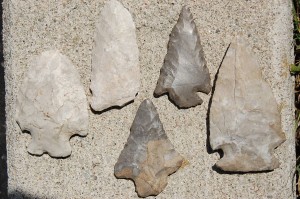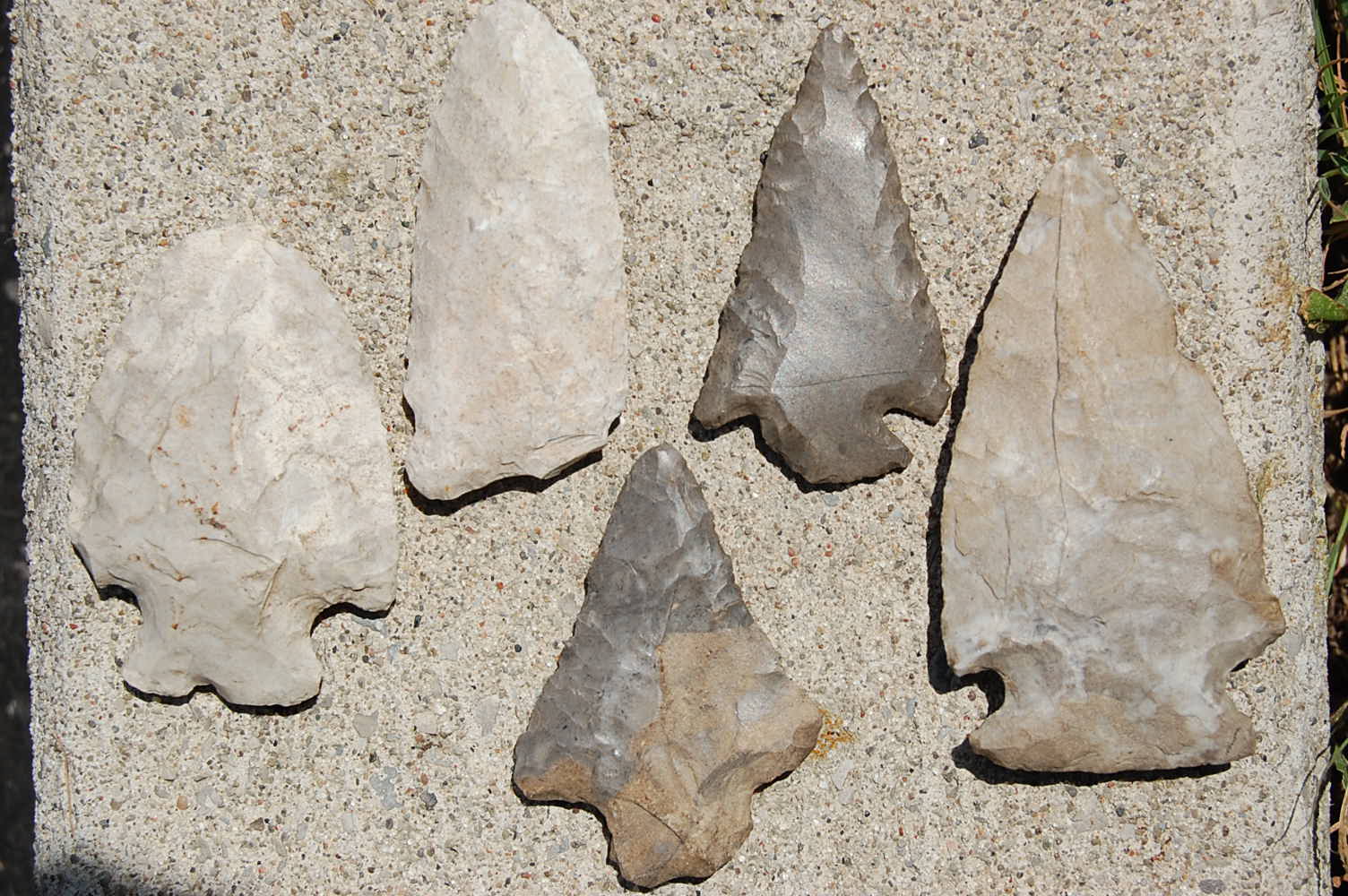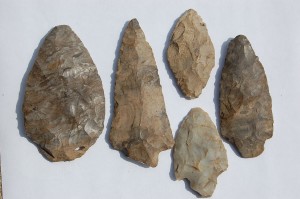 I am sure some of you may have heard this story before, a friend goes out for a walk in the forest and returns back later holding what appears to be an arrowhead. Conversations about the artifact are followed with curiosity to learn more. Questions are asked such as, who made the artifact? How old is it? What type of rock was used to make it? How was it used?
I am sure some of you may have heard this story before, a friend goes out for a walk in the forest and returns back later holding what appears to be an arrowhead. Conversations about the artifact are followed with curiosity to learn more. Questions are asked such as, who made the artifact? How old is it? What type of rock was used to make it? How was it used?
For most people, arrowhead is a popular name used to describe the artifact they have found. In archaeology, arrowheads are generally called projectile points, but we will call them points for now. However, names are given to different types of points based on how archaeologists think they were used. Depending on their weight, size, and shape points can be called a spear, dart, or arrow point. Spear points are normally heavy, large, measure between 8cm to 17cm in length, and most likely tipped the end of a long wooden shaft. Dart points tend to be thick in the middle, light in weight, usually measure from 4cm to 8cm in length, and tipped the end of a long narrow wooden shaft thrown with the help of a dart-thrower. Arrow points are almost always triangular in shape, very thin in the middle, very light in weight, measure 2cm to 4cm in length, and hafted to a short narrow wooden shaft fired from a bow.
So who made these artifacts?
In most cases, they are referred to as Indians. In fact the name Indian was given to the first people met by Europeans arriving in the New World because at first they thought they had landed in India. The name has stayed ever since. Aboriginal is a name used by anthropologists and archaeologists alike when discussing the first people to the New World. We now know Aboriginals lived a hunting-gathering life style whether they lived nomadic or sedentary life styles. We don’t know the original names of Aboriginal groups, but names have been given to their points to distinguish one type from another. Some example names like Hilo, Nettling, and Genesee have been created for specific types of points.
Just how old projectile points are is determined using a technique called radiocarbon dating when uncontaminated organic material is recovered next to a point.
Archaeologists have been able to determine when a point was made in a specific time period based on the results of radiocarbon dating methods, but these are approximate dates. In Canada, the oldest known points are called Clovis points dating up to 11,200 years ago. Similar points have been found in the Great Lakes region dating around 10, 600 years ago.
Most projectile points found in the Lake Erie region of Norfolk and Haldimand County are made from a sedimentary rock high in silica called chert giving the stone a glassy ring to it when two pieces are hit together. What is unique to this region is that almost all points found in Norfolk County were made from chert originating from Haldimand County. Aboriginals either made their points in Haldimand County or picked up chert as rectangular nodules and carried it in tumpline baskets into Norfolk County where stone tools were made, including points.
Chert was only one of several materials used to make these points. Other materials such as wood, bone, and antler were also used, but because they are organic materials most of these points have decomposed over time. There were some attempts to make points from metal such as natural copper, but after contact with Europeans arrow points began to be made from metal products traded with Aboriginals.
Most often projectile points were used to hunt animals because they could create a serious wound to an animal to slow it down, but they were also useful as other types of tools.
While points are sharply tapered, many are wide with rounded or curved cutting edges suggesting as use other than hunting animals. Many points were used every day as knives, scrapers, and even drills because the chert they were made from produced a very sharp edge. However, the one problem with all points is that they break frequently during use and need repairing on a regular basis. This would explain why many broken projectile points been found.
Why are so many projectile points different from one another?
Archaeologists suggest points were used to distinguish one group of people from another. The abundance of points also suggests many were made for the purpose of exchanging and bartering for other resources, especially if they were made from a chert that was considered exotic in colour or resistant to breakage. In fact, chert found along the Onondaga escarpment in Haldimand County and ends in southern New York State was widely transported and exchanged because it was resistant to breakage compared to other types of chert. Lastly, point styles may reflect a response by Aboriginals to adjust the shape or style of the point to changing environments and food resources.
So the next time you get a chance to visit a museum with Aboriginal artifacts with a friend who found a projectile point, or maybe you found a point yourself, think about the amount of history held within this one artifact. Remember, it was made by a person who once lived, breathed, and walked across the very same landscape you live on today. If you look closely at a projectile point imagine what stories it could tell you about the past. For the Silo, Lorenz Bruechert.



Leave a Reply
You must be logged in to post a comment.